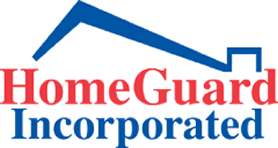What “Fixtures” Should Stay and What Might Go

One of the biggest disputes between the buyer and seller during a real estate transaction is determining and separating what fixtures are associated with the property itself, along with those that the sellers have a right to remove and take with them.
In a typical transaction, depending on the contract terms, items such as stoves, refrigerators, and other appliances are personal property and thus, should be considered as part of the real estate negotiations in question.
However, there are also other various elements that are not as simple as the ones mentioned earlier, mainly because they can fall under the legal statute of being a fixture which would depend on method of attachment and intent.
To understand what fixtures you can take with you and which ones should remain as part of the real estate deal, you should follow these simple guidelines below:
How to tell which household “fixtures” should be included in a real estate deal
Method of attachment
To establish which fixture ought to stay and those that shouldn’t, it is best to start with categorizing the items that are permanently affixed to the ceiling, wall, or flooring (via the use of glue, nails, pipes, screws, or cement). Even if you find something easily detachable, the manner in which a particular fixture is attached may qualify it as a permanent one. Ceiling lights are a prime example; despite the fact that their wires are easily removable, they are still commonly considered a house fixture.
Adaptability
Adaptability simply means that if an item is central to the home, it can’t be removed. Therefore, items such as a floating laminate floor cannot be claimed by the seller, even though it may be just snapped together.
The state of affairs between the two parties involved
In cases of disagreement or dispute between a landlord and a tenant, it is more than likely that the tenant will emerge triumphant when determining what fixtures he or she is entitled to. If the quarrel happens to be between a buyer and a seller, then the buyer stands a greater chance of success.
Intent
The intention of the party when items were installed will also influence whether or not a fixture is considered a permanent attachment. A good example of intent is a built-in bookcase.
Agreement between the two parties
It is important that you carefully read your purchase contract because most of them contain a clause that expressly defines which items can and cannot be included in an ordinary sale.
Before you start negotiating fixtures, first find out the condition of the home
HomeGuard is a Northern California home inspection, roof inspection, termite inspection, and NHD report company. Your Home Inspection is an objective visual examination of the physical structure and systems of the home. After the inspection, you will have a much clearer understanding of the property you are about to purchase and will be able to make a confident buying decision. Contact us today at (855) 331-1900 or use our online contact form for further assistance.




